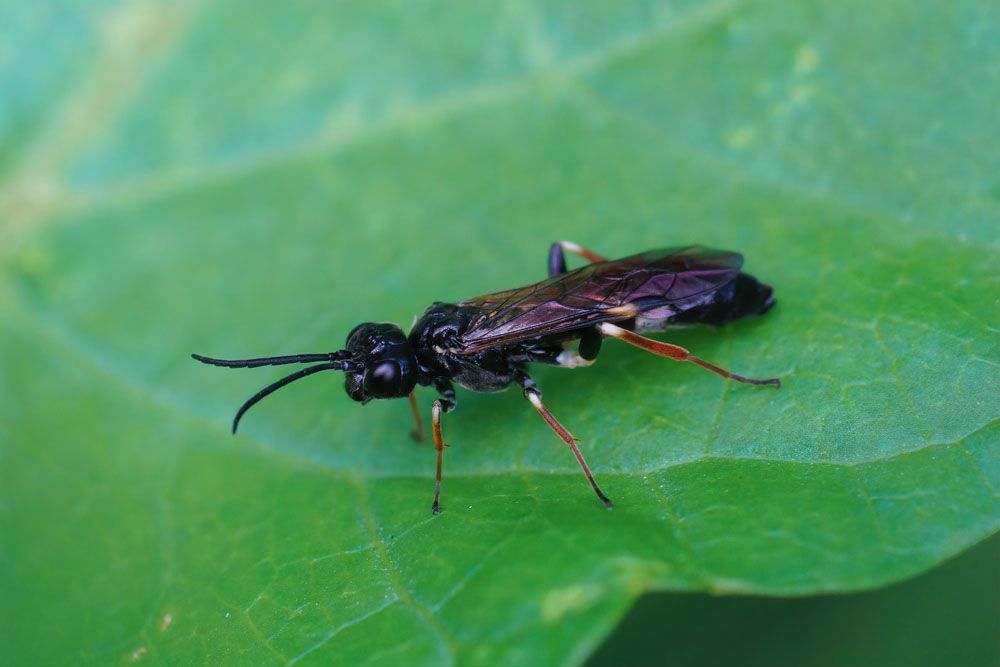
Curled Rose Sawfly – Allanthus cinctus
Curled Rose Sawfly (Allanthus cinctus)
Latin Name: Allanthus cinctus
Common Name: Curled Rose Sawfly or Banded Rose Sawfly
Appearance:
- The curled rose sawfly is tiny to medium-sized black wasp-like common sawfly. It is an agricultural pest of roses and strawberries as a larval.
- Females range in length from 8.0 mm to 8.5 mm.
- Males are substantially shorter, measuring (6.4 mm to 6.7 mm) in length.
- The thorax and the abdomen are inextricably linked. Black is the color of the head. Thread-like, cylindrical, and wholly black antennae.
- They are made up of nine parts. The tips of segments 7 and 8 are not widened. The pronotum (plate covering the thorax) is black and lustrous, with a pair of tiny dots at the back border.
Host plants:
Host plants are pine trees, oaks, hibiscus, azaleas, and roses.
Territory:
It is native to Europe and Asia and is widely distributed. It was brought into North America and may currently be found throughout the northeast, Midwest, and west coast states.
Damages caused by Curled Rose Sawfly:
Larvae chew and remove the leaf surface, chew thoroughly through the foliage, or both differing by age and species. Sawfly larvae feeding can make leaves unattractive and limit subsequent flowering, but it does not threaten the life of otherwise healthy roses.
Description about Gall makers:
Gall makers arrive in silence, like old buccaneers, but without eye patches or shoulder parrots. They also confiscate their rewards quickly and effectively, putting them to work doing their bidding with eye-catching results. Gall-producing insects include a variety of wasps, flies, and a few aphids and mites. Instead of transporting its loot to a secluded cove, the gall maker chemically hijacks a leaf bud or other spot on a tree to construct a casing of plant tissue that protects and nurtures the gall maker’s growing children. Over half of these fascinating critters are attracted to oak trees. Galls can develop on the leaves, bark, flowers, buds, or roots of plants. Except for some twig and stem galls, most growths do not affect healthy trees
Life history and Habits:
The light green larvae feed on the leaves of Roses, both wild and cultivated, as well as Strawberry leaves. They’re hidden in the foliage towards the back. As pupa, they hibernate underground. Larvae are yellowish-green in color with white markings on the thorax and abdomen, and their bodies are 1/2 inch long and tapering. The head is yellowish with black markings around the eyes.
